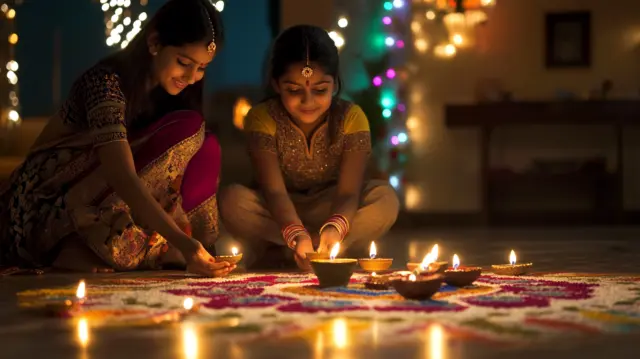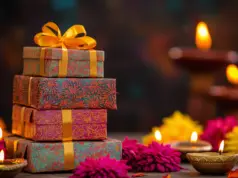Diwali, the festival of lights, is one of India’s most celebrated and beloved festivals. Marking the triumph of good over evil and light over darkness, Diwali is celebrated with great enthusiasm across the country. Although the essence of Diwali remains the same—offering prayers, lighting diyas, decorating homes, and sharing sweets—the way it is celebrated varies in different regions of India. These diverse traditions reflect the rich cultural tapestry of the nation.
North India: The Legend of Lord Rama
In North India, Diwali is deeply rooted in the epic story of Lord Rama. According to the Ramayana, Diwali marks the day when Lord Rama, along with his wife Sita and brother Lakshman, returned to Ayodhya after a 14-year exile and defeating the demon king Ravana. The people of Ayodhya celebrated his return by lighting oil lamps (diyas) across the city. Even today, this tradition is honored in states like Uttar Pradesh, Bihar, and Haryana by lighting diyas, bursting crackers, and performing elaborate pujas (prayer rituals) in temples.
In Varanasi, the banks of the Ganges come alive with thousands of diyas floating on the river, creating a mesmerizing sight. The famous “Dev Deepawali” is celebrated 15 days after Diwali, where the ghats are illuminated with countless lamps to honor the gods and goddesses.
West India: The Businessman’s New Year
In Gujarat and Maharashtra, Diwali has a special significance for business communities. The festival marks the beginning of a new financial year, with traders closing their old accounts and opening new ledgers. Known as Chopda Pujan in Gujarat, businessmen offer prayers to Goddess Lakshmi, the goddess of wealth, and Lord Ganesha for prosperity in the coming year.
In Maharashtra, the five-day festival of Diwali starts with Vasu Baras, which honors cows. On the third day, Laxmi Pujan is performed, and families worship the goddess of wealth for prosperity and happiness.
East India: The Kali Puja
In West Bengal, Assam, and Odisha, Diwali coincides with Kali Puja, a celebration dedicated to the fierce goddess Kali. The night is marked by elaborate rituals, offerings, and lighting up homes with diyas. The focus in these regions is more on honoring the goddess, who is believed to protect people from evil forces and bring them blessings.
In West Bengal, Kali Puja is celebrated with great enthusiasm, and pandals (temporary structures) are set up to house grand idols of the goddess. Devotees visit these pandals to seek blessings, and fireworks light up the night sky.
South India: The Story of Narakasura
In South India, Diwali has its own unique significance. In Tamil Nadu, Karnataka, and parts of Andhra Pradesh, the festival is celebrated to mark the victory of Lord Krishna over the demon Narakasura. Known as Naraka Chaturdashi, the day before Diwali is believed to be the day Narakasura was slain. People start the celebrations early in the morning with an oil bath, symbolizing purification. New clothes are worn, and special delicacies like sweets and savories are prepared and shared among families and neighbors.
In Kerala, however, Diwali is not as widely celebrated as other festivals like Onam, though in some regions, smaller gatherings and celebrations still take place.
Conclusion: A Tapestry of Traditions
Diwali is a festival that unites India in its diversity. While the central theme of good conquering evil remains constant, the rituals, legends, and customs differ from one region to another. From the streets of Ayodhya to the ghats of Varanasi, the lanes of Kolkata, and the homes of Tamil Nadu, Diwali’s light shines brightly in myriad forms, showcasing the beauty of India’s cultural richness. Each state and region adds its own unique flavor to the festival, making it a celebration not just of lights, but of life itself.
Images credits : Freepik



































